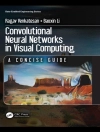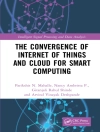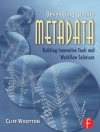As an important future network architecture, virtual network architecture has received extensive attention. Virtual network embedding (VNE) is one of the core services of network virtualization (NV). It provides solutions for various network applications from the perspective of virtual network resource allocation. The Internet aims to provide global users with comprehensive coverage. The network function requests of hundreds of millions of end users have brought great pressure to the underlying network architecture. VNE algorithm can provide effective support for the reasonable and efficient allocation of network resources, so as to alleviate the pressure off the Internet.
At present, a distinctive feature of the Internet environment is that the quality of service (Qo S) requirements of users are differentiated. Different regions, different times, and different users have different network function requirements. Therefore, network resources need to be reasonably allocated according to users’ Qo S requirements to avoid the waste of network resources.
In this book, based on the analysis of the principle of VNE algorithm, we provide a VNE scheme for users with differentiated Qo S requirements. We summarize the common user requirements into four categories: security awareness, service awareness, energy awareness, and load balance, and then introduce the specific implementation methods of various differentiated Qo S algorithms. This book provides a variety of VNE solutions, including VNE algorithms for single physical domain, VNE algorithms for across multiple physical domains, VNE algorithms based on heuristic method, and VNE algorithms based on machine learning method.
Зміст
Chapter 1. Introduction.- Chapter 2. Introduction of security requirements in VNE.- Chapter 3. Security Aware Virtual Network Embedding Algorithm using Information Entropy TOPSIS.- Chapter 4. Security-Aware Virtual Network Embedding Algorithm based on Reinforcement Learning.- Chapter 5. VNE Solution for Network Differentiated Qo S
and Security Requirements From the Perspective of Deep Reinforcement Learning.- Chapter 6. Resource Management and Security Scheme of ICPSs and Io T Based on VNE Algorithm.- Chapter 7. Description of service-aware requirements in VNE.- Chapter 8. Virtual Network Embedding based on Modified Genetic Algorithm.- Chapter 9. VNE-HPSO Virtual Network Embedding Algorithm based On Hybrid Particle Swarm Optimization.- Chapter 10. Topology based Reliable Virtual Network Embedding from a Qo E Perspective.- Chapter 11. ‘DSCD Delay Sensitive Cross-Domain Virtual Network Embedding Algorithm’.- Chapter 12.’A Multi-Domain Virtual Network Embedding Algorithm with Delay Prediction’.- Chapter 13. ‘Description of energy consumption requirements in VNE’.- Chapter 14. A’Multi-objective Enhanced Particle Swarm Optimization in Virtual Network Embedding’.- Chapter 15. ‘Incorporating Energy and Load Balance into Virtual Network Embedding Process’.- Chapter 16. ‘Io V Scenario Implementation of a Bandwidth Aware Algorithm in Wireless Network Communication Mode’.- Chapter 17. Description of load balance in VNE.- Chapter 18.’A Multi-Domain VNE Algorithm based on Load Balancing in the Io T Networks’.- Chapter 19.’Virtual Network Embedding based on Computing, Network and Storage Resource Constraints’.- Chapter 20. Virtual Network Embedding using Node Multiple Metrics based on Simplified ELECTRE Method.- Chapter 21.’VNE Strategy based on Chaotic Hybrid Flower Pollination Algorithm Considering Multi-criteria Decision Making’.- Chapter 22. Conclusion.
Про автора
Chunxiao Jiang is an associate professor in School of Information Science and Technology, Tsinghua University. He received the B.S. degree in information engineering from Beihang University, Beijing in 2008 and the Ph.D. degree in electronic engineering from Tsinghua University, Beijing in 2013, both with the highest honors. His research interests include application of game theory, optimization, and statistical theories to communication, networking, and resource allocation problems, in particular space networks and heterogeneous networks. Dr. Jiang has served as an Editor of IEEE Transactions on Communications, IEEE Internet of Things Journal, IEEE Network, IEEE Communications Letters, and a Guest Editor of IEEE Communications Magazine, IEEE Transactions on Network Science and Engineering and IEEE Transactions on Cognitive Communications and Networking. He has also served as a member of the technical program committee as well as the Symposium Chair for a number of international conferences, including IEEE CNS 2020 Publication Chair, IEEE WCSP 2019 Symposium Chair, IEEE ICC 2018 Symposium Co-Chair, IWCMC 2020/19/18 Symposium Chair, Wi Mob 2018 Publicity Chair, ICCC 2018 Workshop Co-Chair, and ICC 2017 Workshop Co-Chair. Dr. Jiang is the recipient of the Best Paper Award from IEEE GLOBECOM in 2013, the Best Student Paper Award from IEEE Global SIP in 2015, IEEE Communications Society Young Author Best Paper Award in 2017, the Best Paper Award IWCMC in 2017, IEEE Com Soc TC Best Journal Paper Award of the IEEE Com Soc TC on Green Communications & Computing 2018, IEEE Com Soc TC Best Journal Paper Award of the IEEE Com Soc TC on Communications Systems Integration and Modeling 2018, the Best Paper Award from ICC 2019, IEEE VTS Early Career Award 2020, IEEE Com Soc Asia-Pacific Best Young Researcher Award 2020, and IEEE VTS Distinguished Lecturer 2021. He received the Chinese National Second Prize in Technical Inventions Award in 2018 and Natural Science Foundation of China Excellent Young Scientists Fund Award in 2019.
Peiying Zhang is currently an Associate Professor with the School of Computer Science and Technology, China University of Petroleum (East China). He received his Ph.D. in the School of Information and Communication Engineering, Beijing University of Posts and Telecommunications in 2019. He has published multiple IEEE/ACM Trans./Journal/Magazine papers since 2016, such as IEEE TII, IEEE T-ITS, IEEE TVT, IEEE TNSE, IEEE TNSM, IEEE TETC, IEEE Network, IEEE Access, IEEE Io T-J, ACM TALLIP, COMPUT COMMUN, IEEE COMMUN MAG, and etc. He served as the Technical Program Committee of ISCIT 2016, ISCIT 2017, ISCIT 2018, ISCIT 2019, Globecom 2019, COMNETSAT 2020, Soft Io T 2021, CBIo T 2021, IWCMC-Satellite 2019, and IWCMC-Satellite 2020. His research interests include semantic computing, future internet architecture, network virtualization, and artificial intelligence for networking.












